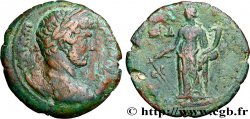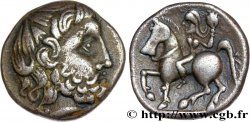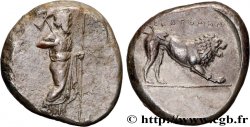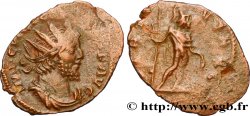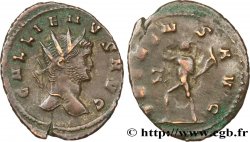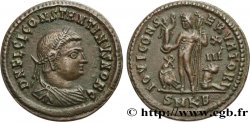brm_1051474 - ADRIANO Denier
No disponible.
Artículo vendido en nuestra tienda (2025)
Precio : 280.00 €
Artículo vendido en nuestra tienda (2025)
Precio : 280.00 €
Tipo : Denier
Fecha: 117
Nombre del taller / ciudad: Roma
Metal: plata
Milésimas de pureza : 900 ‰
Diámetro: 19 mm
Eje de acuñación: 6 h.
Peso: 3,21 g.
Grado de rareza: R2
Officine: 3e
Comentarios sobre el estado de conservación:
Monnaie centrée. Joli buste d’Hadrien, bien venu à la frappe. Joli revers. Patine grise
N° en los catálogos de referencia :
Anverso
Titulatura del anverso: IMP CAES TRAIAN HADRIANO AVG DIVI TRA.
Descripción del anverso: Buste héroïque lauré d’Hadrien à droite, drapé sur l’épaule vu de trois quarts en avant (O*2).
Traducción del anverso: "Imperatori Cæsari Traiano Hadriano Augusto Divi Traiano", (À l'empereur césar Trajan Hadrien auguste fils du divin Trajan).
Reverso
Titulatura del reverso: PARTH F DIVI NER NEP P M TR P COS// IVSTITIA.
Descripción del reverso: Iustitia (la Justice), drapée assise à gauche, tenant une patère de la main droite et un sceptre long de la main gauche.
Traducción del reverso: "Parthico Filio Divi Nervæ Nepoti Pontifico Maximo Tribuniciæ Potestate Consule/ Iustitia ", (Au parthique, fils du divin auguste Nerva grand père grand pontife revêtu de la puissance tribunitienne consul/ la Justice).
Comentario
Grand buste héroïque avec grand pan de paludamentum. Il revient à l’école anglaise et aux travaux de P. V. Hill, The dating and arrangement of the Undated Coins of Rome AD. 98-148, Londres 1970, d’avoir reclassé les différentes émissions de l’atelier de Rome, grâce à la théorie des cycles et d’avoir mis en lumière l’organisation de l’atelier de Rome qui travaille en officines et non pas en fonction du métal comme l’avaient décrit les numismates du XIXe siècle. Épigraphie très fine et détaillée. Portrait tout à fait exceptionnel pour ce type de monnayage. Semble beaucoup plus rare que ne le laissent paraître les différents ouvrages généraux.
Large heroic bust with a large section of paludamentum. It is the English school and the work of PV Hill, The dating and arrangement of the Undated Coins of Rome AD. 98-148, London 1970, which reclassified the various issues of the Roman mint, thanks to the theory of cycles and to having highlighted the organization of the Roman mint which worked in officinae and not according to the metal as the numismatists of the 19th century had described. Very fine and detailed epigraphy. A truly exceptional portrait for this type of coinage. Seems much rarer than the various general works suggest.
Large heroic bust with a large section of paludamentum. It is the English school and the work of PV Hill, The dating and arrangement of the Undated Coins of Rome AD. 98-148, London 1970, which reclassified the various issues of the Roman mint, thanks to the theory of cycles and to having highlighted the organization of the Roman mint which worked in officinae and not according to the metal as the numismatists of the 19th century had described. Very fine and detailed epigraphy. A truly exceptional portrait for this type of coinage. Seems much rarer than the various general works suggest.








 Informar de un error
Informar de un error Imprimir la página
Imprimir la página Comparte mi selección
Comparte mi selección Haz una pregunta
Haz una pregunta Consignar / vender
Consignar / vender
 Descriptivo
Descriptivo